Well over a hundred car companies have advertised in the Post. Many of these companies, like Peerless and Dort, are barely remembered today. Among the obscure makes whose ads appeared in the Post is Haynes, which were built in Kokomo, Indiana. (For more on the auto industry’s early years, check out Post‘s new special collector’s edition, Automobiles in America!)
Haynes automobiles deserve to be remembered for their imaginative, distinctive ads, many of which we’ve included below.
But Haynes are remembered for more than just the ads.
The company was started in the earliest days of the auto industry by Elwood Haynes. He claimed his first model, which he built with Elmer and Edgar Apperson in 1894, was “America’s first car” when he donated it to the Smithsonian Institution in 1910. But, even at that time, it was known that other cars, including the Duryea brothers’ invention built in 1893, existed before Haynes’ Pioneer.
Yet the Duryea Motor Wagon Company folded only a few years after. Haynes continued to make cars for another 28 years. He had joined the Appersons to form the Haynes-Apperson Company in 1898, but the alliance lasted only a few years. By 1905, Haynes reorganized as the Haynes Automobile Company.
In 1908, he employed 600 workers in what the Kokomo Dispatch was calling “the oldest automobile factory in the United States.” They were producing 400 cars a year in two models: the five-passenger, 30 horsepower runabout ($2,500) and the seven-passenger, 50 hp touring car ($5,500).
Though Haynes may not have made the first car in America, he deserves the credit for introducing several industry standards. In 1911, his was the first car whose standard equipment included a windshield, headlights, and a speedometer.
It also included the Vulcan Electric Gear Shift. This feature appeared as a number of push buttons on the steering wheel, which shifted gears by electric solenoids instead of mechanical levers. It made the transmission “as easily operated as the electric horn,” according to its manufacturer, ”and makes the big gasoline car as easy to operate as an electric.”
The company chose the wrong time to expand their plant. Haynes built a new factory with a moving assembly line that could produce 60 cars a day. But in 1920, the U.S. economy went into recession. The Haynes Automobile Company was hit hard and never recovered. The plant ceased operations in September 1924.
Vintage Haynes Automobile Ads from the pages of The Saturday Evening Post:
Become a Saturday Evening Post member and enjoy unlimited access. Subscribe now
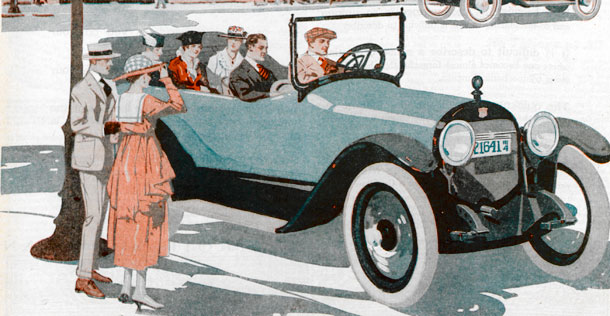
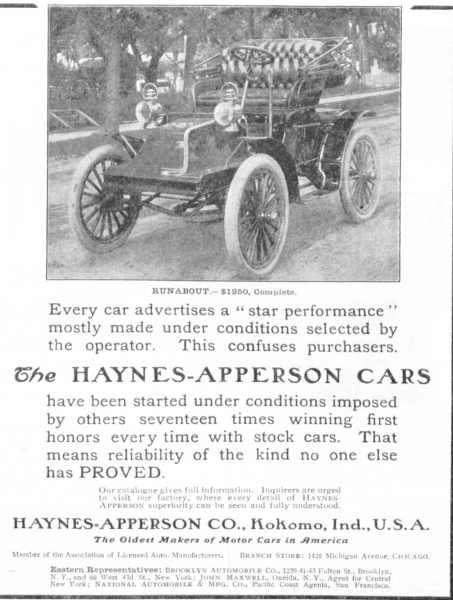
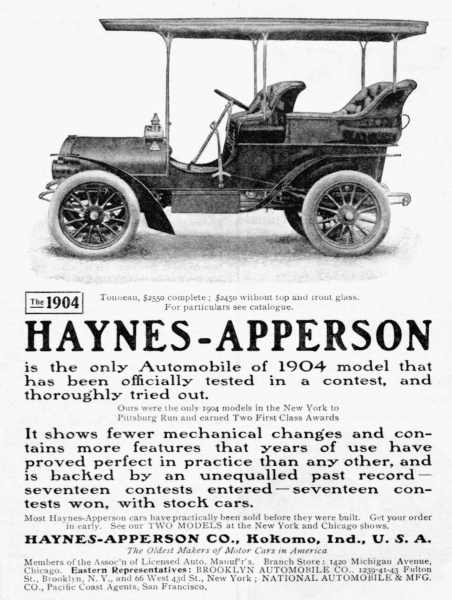
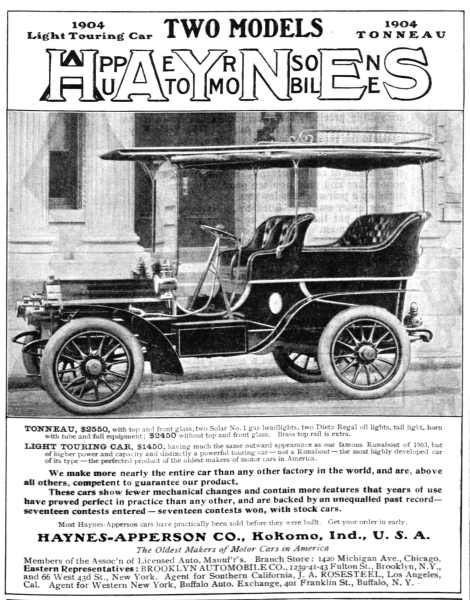

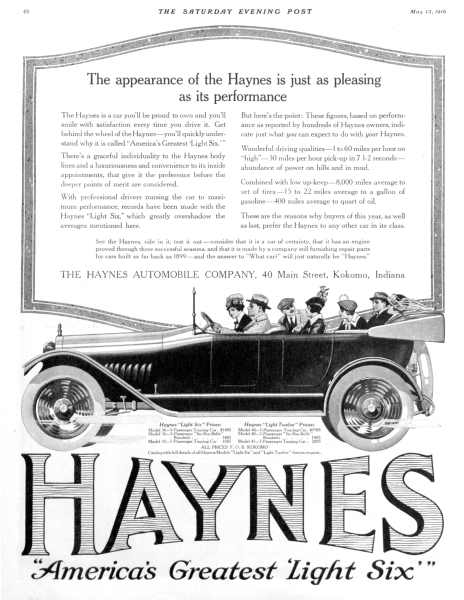
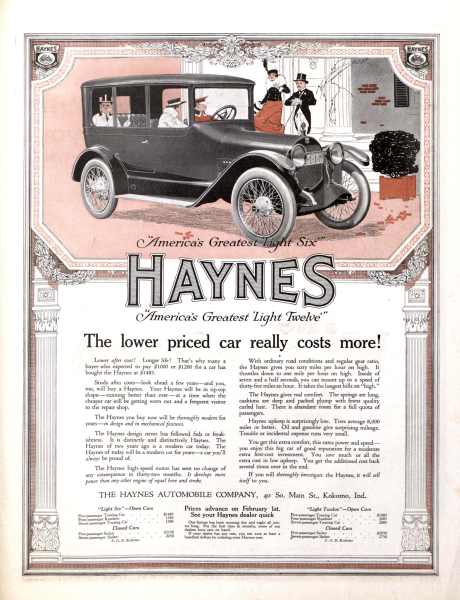
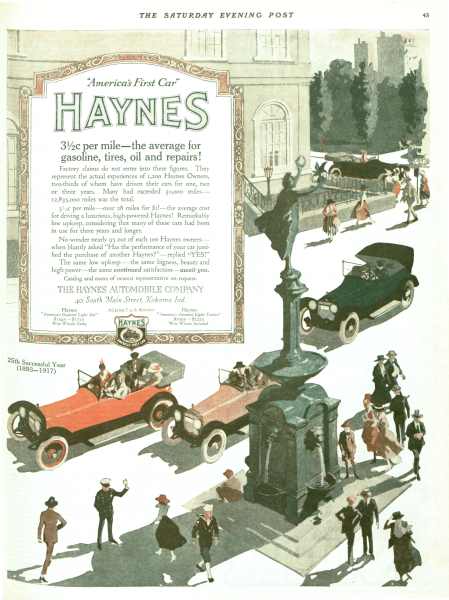
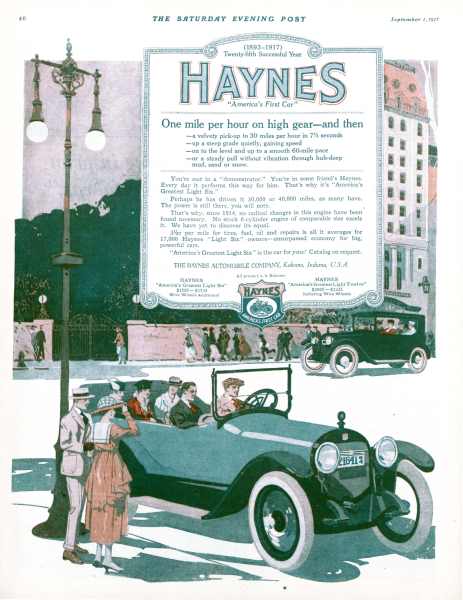
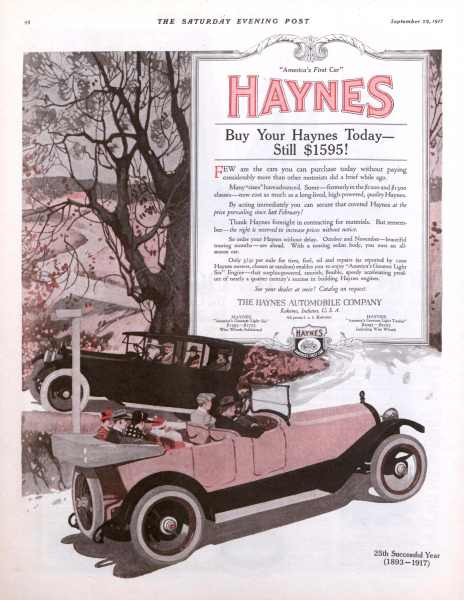
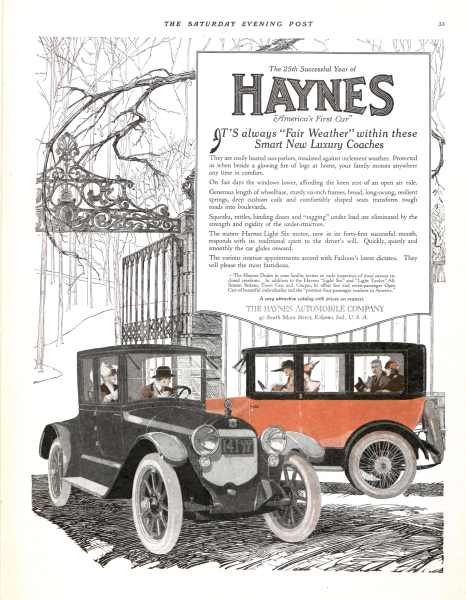
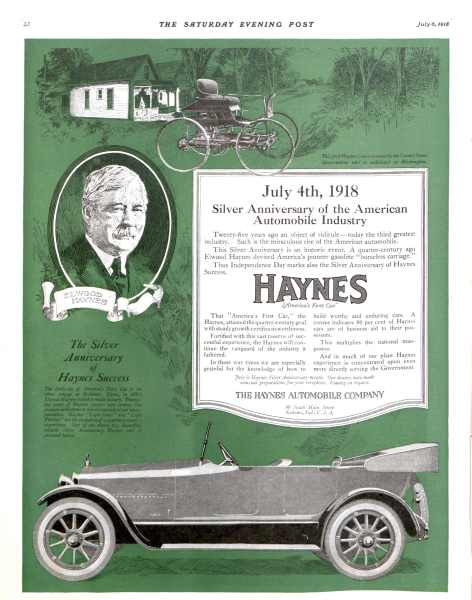

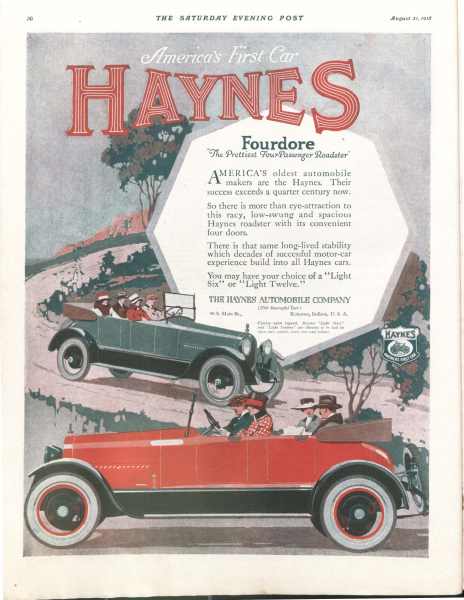
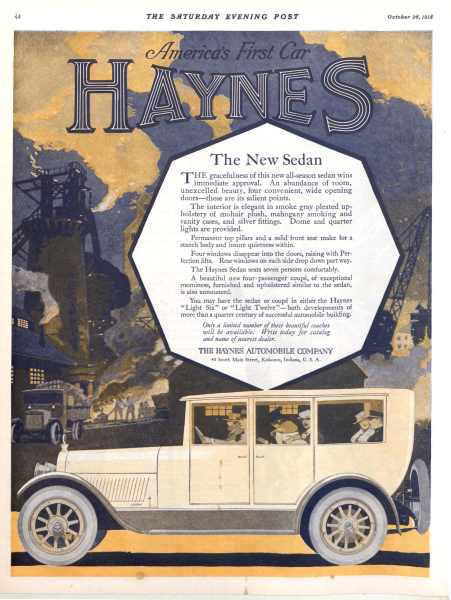
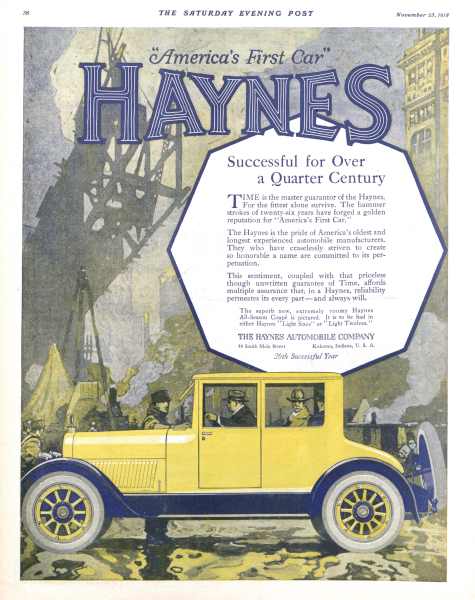
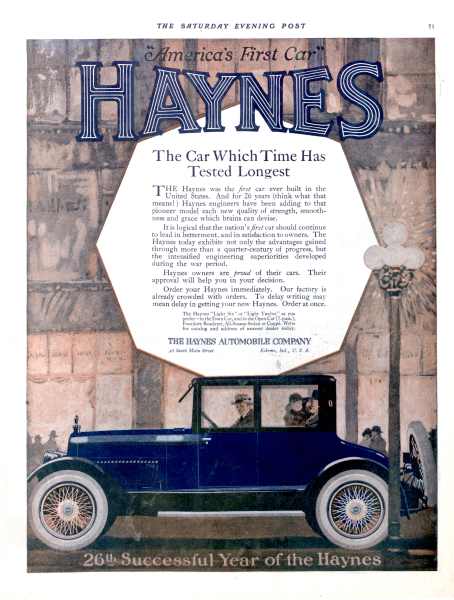
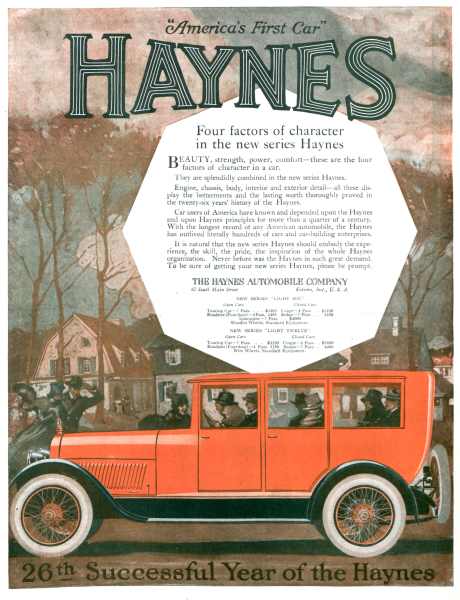
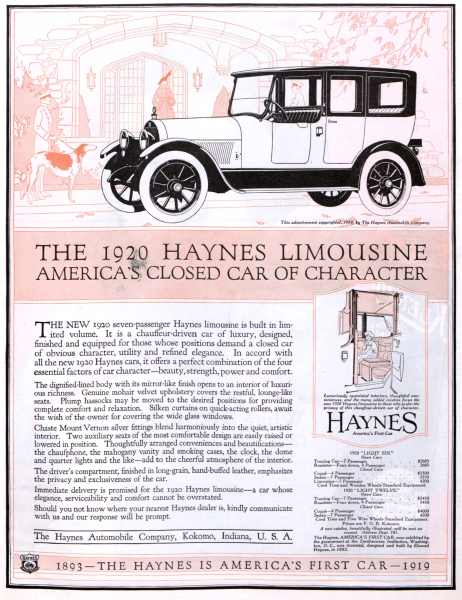
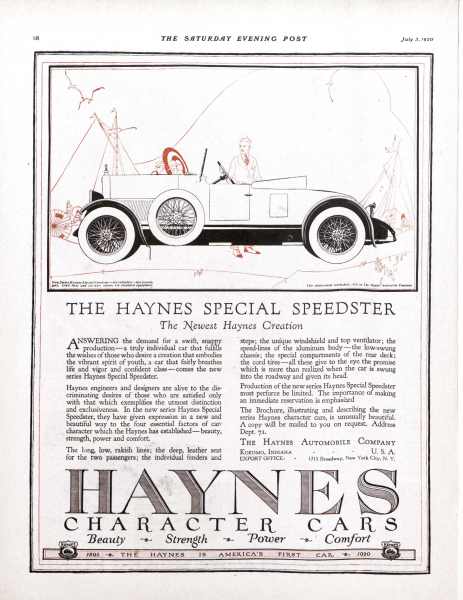
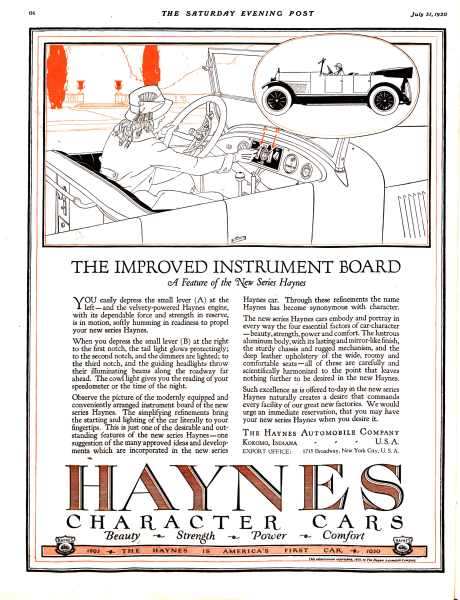
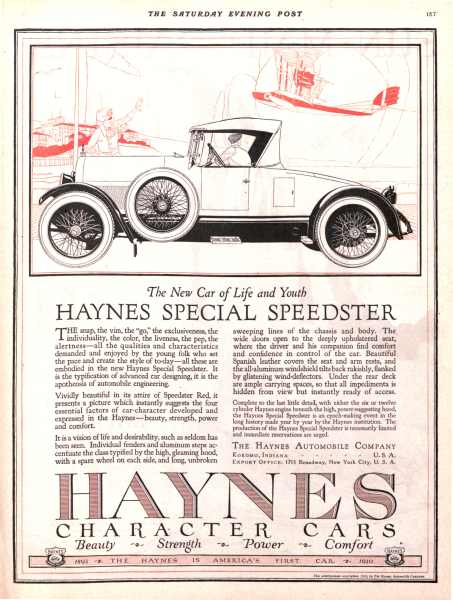
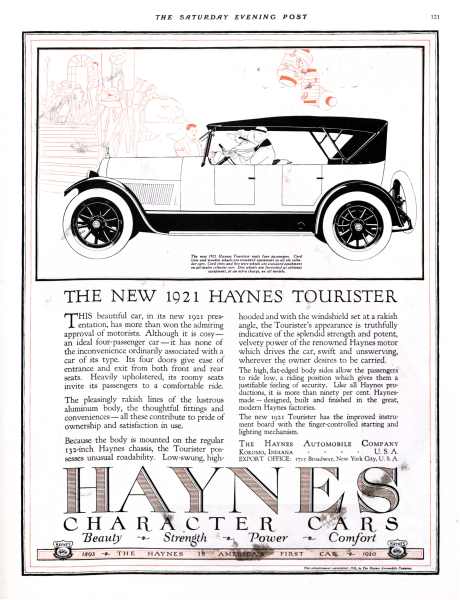
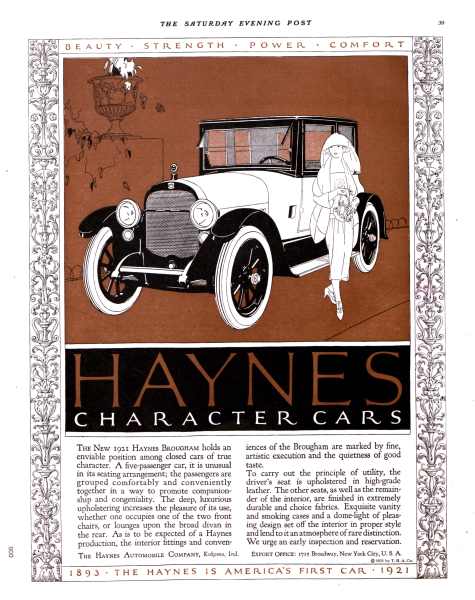

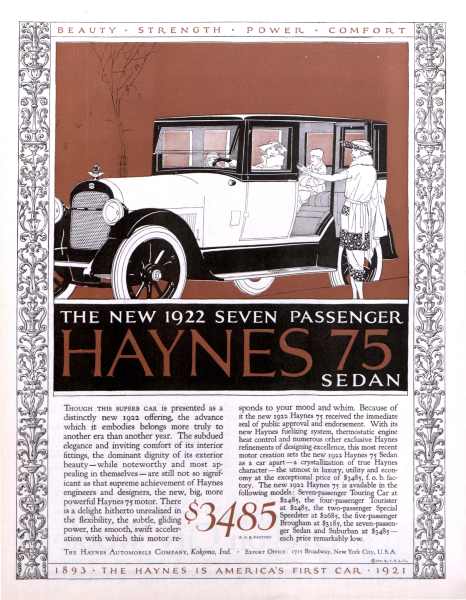
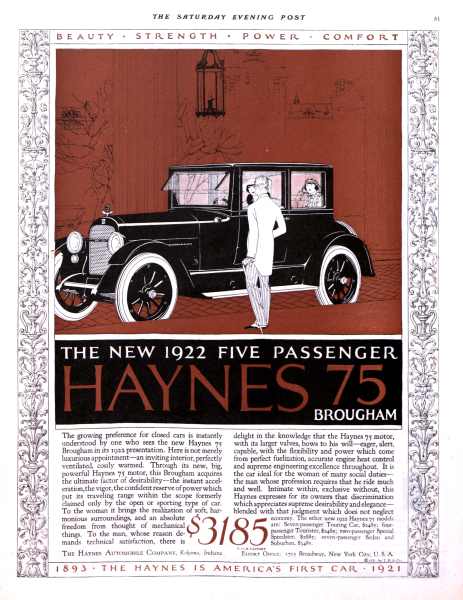
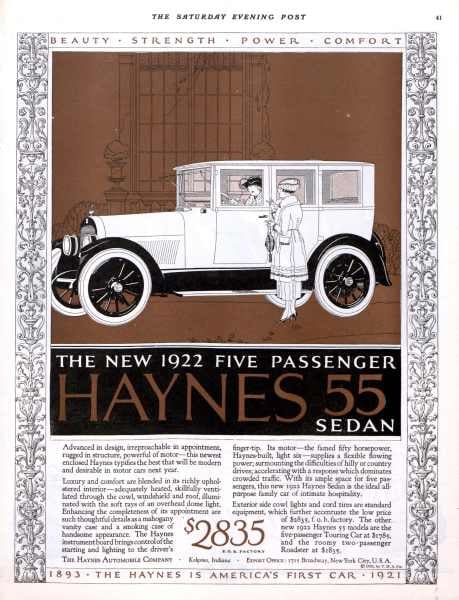
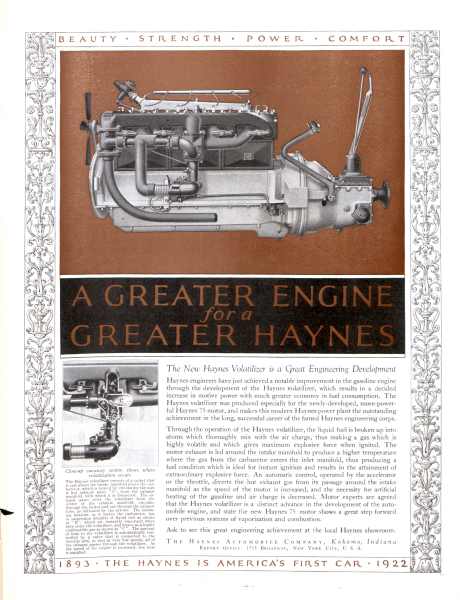
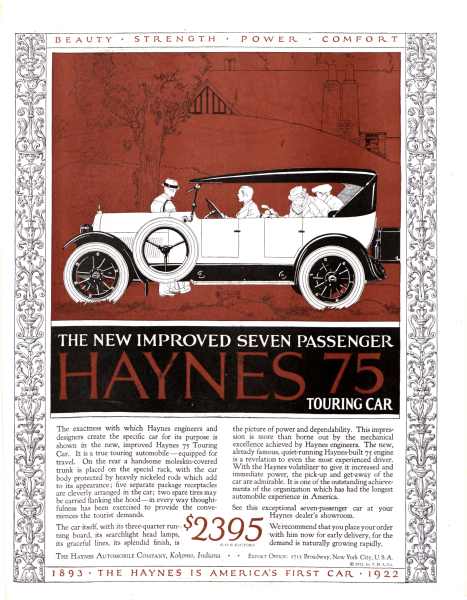
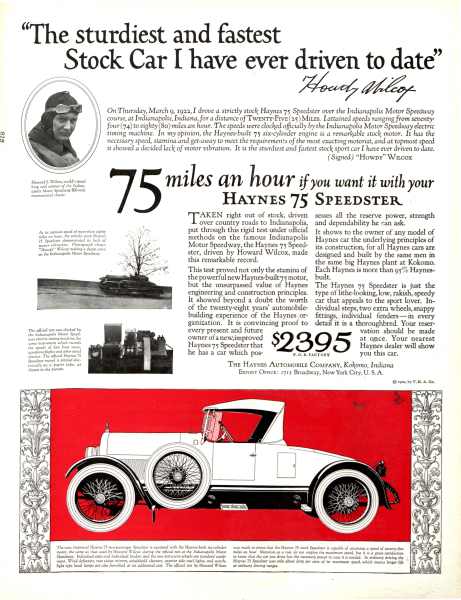
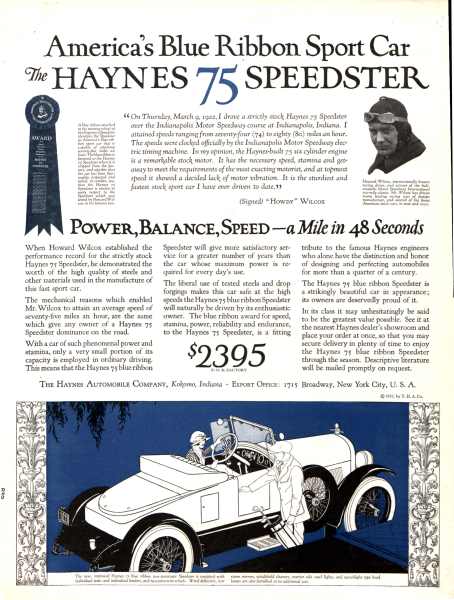
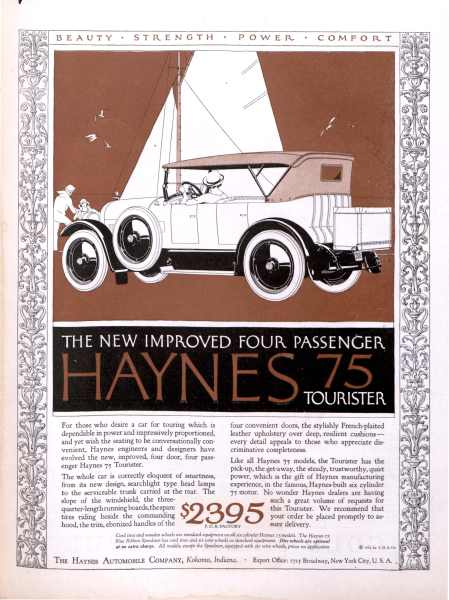
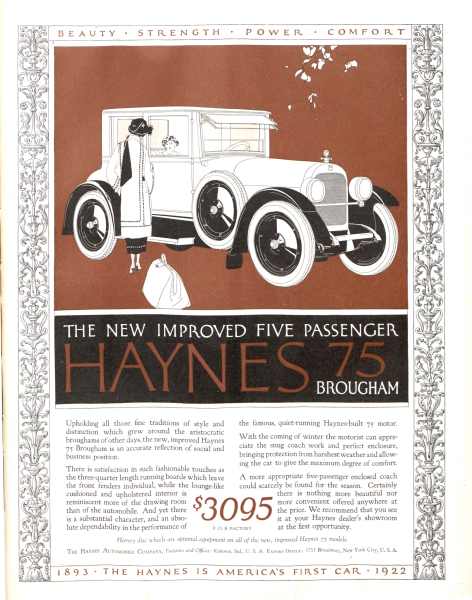
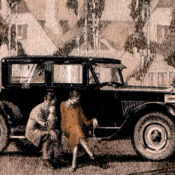
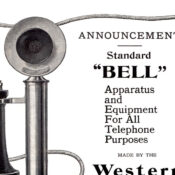
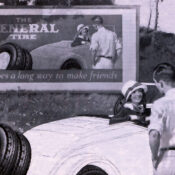
Comments
Thanks to Jeff Nilsson and the SEP. The history of manufacturing and innovation in America is more than just a curiosity. It is a beacon to the future. The Post is the keeper of the flame.